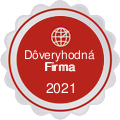Hodnotenie koncentrácie β-endorfínu, nálady a intenzity bolesti u mužov s idiopatickou osteoartrózou bedra liečených premenlivým magnetickým poľom /angl./

Evaluation of β-endorphin concentration, mood, and pain intensity in men with idiopathic hip osteoarthritis treated with variable magnetic field
Hodnotenie koncentrácie β-endorfínu, nálady a intenzity bolesti u mužov s idiopatickou osteoartrózou bedra liečených premenlivým magnetickým poľom
Abstrakt:
Osteoartritída je najčastejšie diagnostikovaným ochorením pohybového aparátu. Rastúci počet pacientov čakajúcich na chirurgickú liečbu a možné negatívne následky vyplývajúce z dlhodobej farmakologickej liečby vedú k hľadaniu nefarmakologických metód zameraných na zmiernenie bolesti a zníženie dávok analgetík, medzi ktoré patrí fyzikálna terapia s využitím magnetických polí.
Do štúdie sa zapojilo 30 mužov vo veku 49 až 76 rokov (priemerný vek, 61,7 rokov) liečených na idiopatickú osteoartrózu bedrového kĺbu. Subjekty boli rozdelené do 2 skupín (každá po 15 pacientoch) a podstúpili cyklus magnetostimulačných a magnetoterapických procedúr. Počas expozičného cyklu boli koncentrácie 3-endorfínu hodnotené trikrát a nálada bola hodnotená dvakrát. Okrem toho sa pred a po ukončení liečby uskutočnilo hodnotenie intenzity bolesti a dávky analgetík.
Štatisticky významné zvýšenie plazmatickej koncentrácie β-endorfínov sa pozorovalo u oboch skupín pacientov (magnetostimulácia - P <0,01 oproti magnetoledterapii - P <0,001). Pri hodnotení nálady respondentov sa nezistili žiadne štatisticky významné rozdiely. U oboch skupín pacientov bolo pozorované významné zníženie intenzity vnímanej bolesti (P <0,05). V skupine pacientov, ktorí podstúpili magnetoledterapeutický cyklus, bolo užívanie analgetík významne nižšie o 13% (P <0,05) v porovnaní s počiatočnými hodnotami, čo sa nezaznamenalo v skupine pacientov, ktorí sa podrobili magnetostimulačným procedúram.
Použitie terapie magnetickým poľom pri liečbe mužov s idiopatickou osteoartrózou bedrových kĺbov spôsobuje štatisticky významné zvýšenie koncentrácie plazmatických β-endorfínov, čo vedie k štatisticky významnému analgetickému účinku u skupín pacientov liečených magnetostimuláciou aj magnetoterapiou, so sprievodným znížením potreba analgetických liekov v magnetoterapickej skupine, ale bez akýchkoľvek významných zmien týkajúcich sa nálady pacienta.
Kľúčové slová: β-endorfíny, terapia magnetickým poľom, magnetoledterapia, magnetostimulácia, nálada, osteoartróza bedrového kĺbu, intenzita bolesti
Abstract
Osteoarthritis is the most frequently diagnosed disease of the musculoskeletal system. Growing number of patients waiting for surgical treatment and the possible negative consequences resulting from long-term pharmacological therapy lead to the search for non-pharmacological methods aimed at alleviating pain and reducing doses of analgesics, among them physical therapy with use of magnetic fields.
The study involved 30 men aged 49 to 76 (mean age, 61.7 years) treated for idiopathic osteoarthritis of the hip joint. The subjects were divided into 2 groups (15 patients each) and underwent a cycle of magnetostimulation and magnetoledtherapy procedures, respectively. During the exposure cycle concentrations of β-endorphin were assessed 3 times and the mood was assessed 2 times. In addition, the assessment of pain intensity and the dose of analgesic drugs was performed before and after the end of therapy.
Statistically significant increase in plasma β-endorphins concentration was observed in both groups of patients (magnetostimulation—P < .01 vs magnetoledtherapy—P < .001). In the assessment of mood of respondents, no statistically significant differences were found. Significant reduction in intensity of perceived pain was observed in both groups of patients (P < .05). In the group of patients who underwent magnetoledtherapy cycle, the analgesic drug use was significantly lower by 13% (P < .05) as compared with initial values, which was not noted in group of patients who underwent magnetostimulation procedures.
The use of magnetic field therapy in the treatment of men with idiopathic osteoarthritis of hip joints causes a statistically significant increase in the concentration of plasma β-endorphins resulting in statistically significant analgesic effect in both magnetostimulation and magnetoledtherapy treated groups of patients, with accompanying decrease of need for analgetic drugs in magnetoledtherapy group, but without any significant changes regarding the patient's mood.
Keywords: β-endorphins, magnetic field therapy, magnetoledtherapy, magnetostimulation, mood, osteoarthritis of the hip joint, pain intensity
Full text link: https://www.ncbi.nlm.nih.gov/pmc/articles/PMC6708614/

